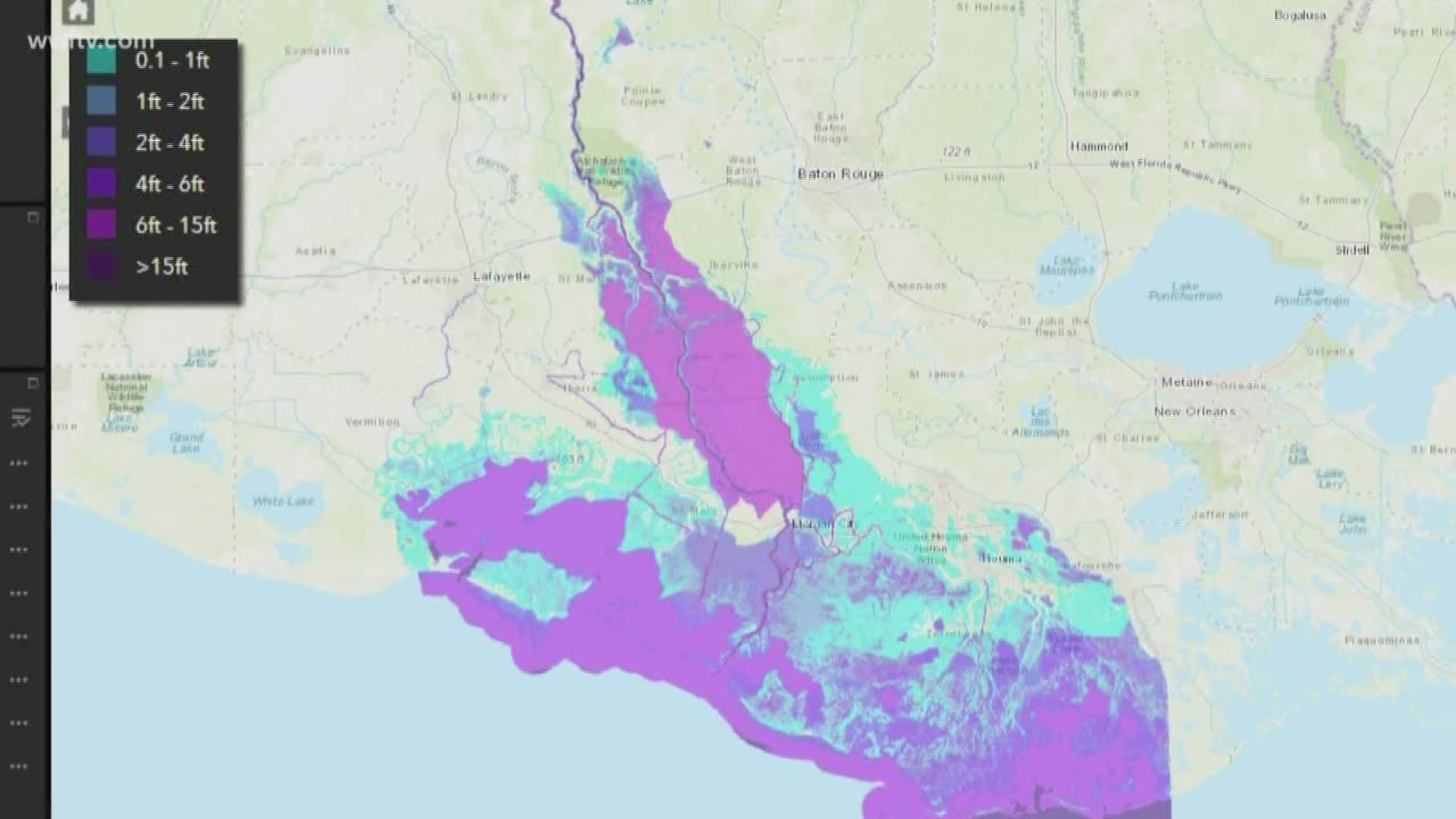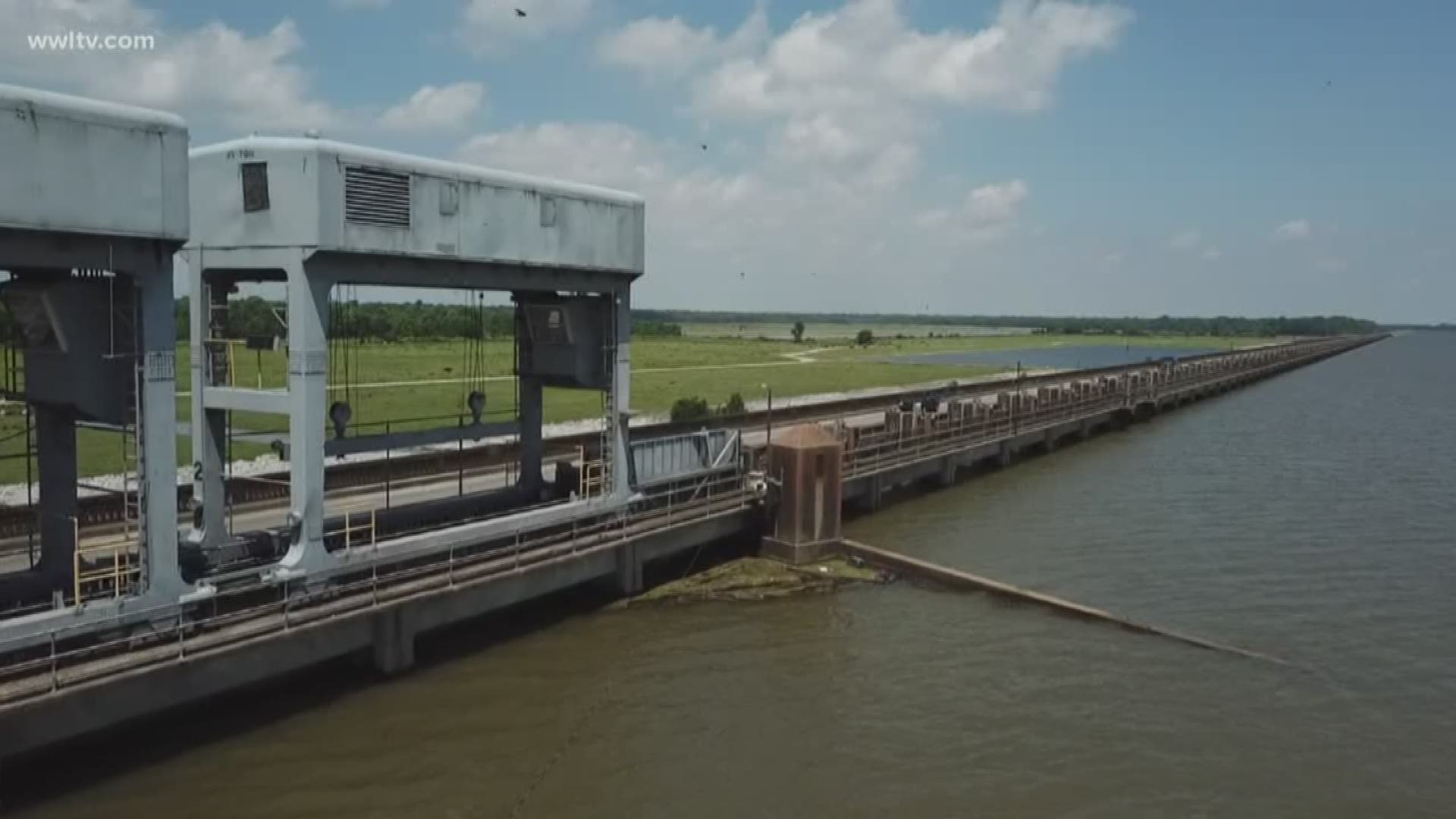Shrimpers and biologists say the expected opening of the Morganza Spillway just 13 days into the season will likely affect this year’s harvest.
While officials aren’t certain what the extent of the effect will be, Grand Isle shrimper Dean Blanchard said his industry is already behind where its been in previous years.
“It’s a disaster right now,” said Blanchard.
Blanchard said he’s worried that it’s not just freshwater coming down the spillway but polluted freshwater.
“That freshwater’s not so fresh,” he said.
Shrimpers in his area already felt the effects of opening the Bonnet Carre Spillway twice this year, which caused shrimp to move farther away from the area.
“Now, they’re going to open the Morganza and finish us off,” he said.
Louisiana Department of Wildlife and Fisheries biologist Harry Blanchet said the Morganza opening is just one part of a much larger flood event that has already placed a lot of fresh water along the coast.
“We’re going to see some extended impact in salinity for some time,” he said. “It takes some time for that whole swamp system to drain. It doesn’t just disappear.”
He said the agency’s samples have shown salt levels in inland waters are lower than they would expect at this time of the year. The size of brown shrimp are also lower on average.
“Brown shrimp prefer high salinity conditions for optimum growth,” he said. Without high levels, brown shrimp won’t grow as quickly and may fail to reach a harvestable size.
Blanchet said he believes we might see lower salinity levels through the start of the fall white shrimp season, which they take samples for in August.
The state of shrimping industry at nine days into the season was sad, said Blanchard. People rely on these few months to make a living for the year.
“It’s hard to make a living for a whole year in nine days,” he said. “It’s a shame to see people who are trying to work hard and they can’t make it.”
Blanchard said he would like to see the local shrimping industry compensated by the state, similar to the aid distributed to farmers in the spillway.
“We are farmers of the sea,” he said. “Why should we suffer to help somebody else and not get compensated for it when other people are getting compensated?”
Beyond the shrimping industry, Blanchet said the flow of freshwater could potentially kill the younger oysters in a lot of estuaries, while older oysters may survive depending on how low the salinity goes and for how long. It may also force crabs to move from their usual areas.
He stressed that it is difficult to predict what will happen, and the office probably won’t have data on how the fisheries were affected until a couple months after the event is over.
In terms of land-based wildlife, Widlife and Fisheries biologist Scott Durham said Terrebonne Parish is unlikely to see the kind of animal deaths that may occur in the Atchafalaya Basin.
Parish residents should just be aware that animals may be fleeing from the flooding and appear in areas where they aren’t typically located.
“You just want to leave them alone where they’re not being forced back into the water,” he said.


